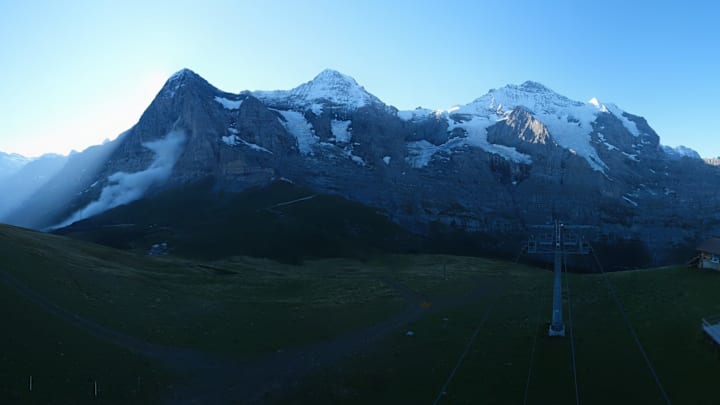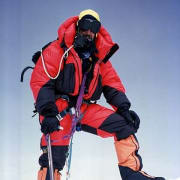A Massive Rockfall Cascades Down the Eiger's North Face

A massive rockfall blasted down the treacherous North Face of the Eiger on September 7th. The thunderous explosion distributed mountainous dust throughout the Swiss valley below the iconic peak. The Eiger, 13,015 ft., in Switzerland presents one of the most daunting climbs in the Alps. While it offers various routes, the North Face remains a prestigious and perilous challenge for even the most experienced mountaineers.
Angela Benavides reported in her article, 'Massive Rockfall on the North Face of the Eiger', for ExplorersWeb that a large boulder came loose on the upper side of the daunting North Face and triggered the slide. Apparently a temperature inversion caused the dust cloud to spread throughout the valley, where it remained for most of the day. Such a slide represents another manifestation of the dangerous effects of climate change in the mountains. Benavides notes, “Such events happen in the Berner Oberland from time to time due to thawing permafrost. Until recent years, ice and snow within and between the rocks largely glued together the unstable slopes. As this “glue” melts in the higher temperatures, the rocks become even more unstable.”
The iconic Eiger stands proudly in the Bernese Alps of Switzerland, and is one of the most recognized peaks in the world. The northern side of the mountain rises more than 10,000 ft. above the two valleys of Grindelwald and Lauterbrunnen, the southern side faces the large glaciers of the Jungfrau-Aletsch area - the most glaciated region in the Alps. The most ominous feature of the Eiger - the 5,900-foot North Face known as Mordwand or the ‘Death Wall’, has attracted and deterred mountaineers from around the world for centuries. The first successful summit of the Eiger was on August 11, 1858 by Swiss climbers Christian Almer, Peter Bohren, ang Charles Barrington, via the west flank and west ridge. This route is far more accommodating than the perilous and infamous North Face.
The Eiger is infamous for the many tragedies involving climbing expeditions. Since 1935, at least 64 climbers have died attempting the North Face. The first successful ascent of the North Face came in 1938 by a German-Austrian team consisting of Anderl Heckmair, Ludwig Vörg, Heinrich Harrer, and Fritz Kasparek. This historic climb, fraught with peril and hardship, is detailed in Heinrich Harrer's book, The White Spider, which is a classic in mountaineering literature. Since then, the North Face has been the scene of many dramatic and tragic events. The North Face attracts mountaineers annually seeking to conquer one of the most difficult and dangerous faces in the Alps.
The best time to climb the Eiger largely depends on the route, and the climber's level of expertise and experience. Generally, the climbing season for the Eiger is from late June to early September. During these months, the weather is more stable, mitigating the risk of avalanches and rockfall compared to other times of the year. The longer daylight hours and more predictable weather patterns make it the most favorable time for ascents, though the Eiger's North Face remains treacherous throughout the year. Climbers should start their ascents early in the day to avoid afternoon storms, melting ice and rockfall. Former NFL player, and Seven Summit mountaineer, Mark Pattison recently climber the Eiger, and commented here on AdventureonSI.com about its beaty and difficulty.
Rockfalls are not uncommon on the Eiger, or the other famous mountains in the Alps, but the recently reported massive slide distinguished itself because of its remarkable mass.
“Such rockfalls are not uncommon,” Kathrin Naegeli, media spokeswoman for Jungfrau Railways, told Berneroberlaender.ch.
“The last time this happened was at the beginning of August.”
“Rock avalanches are increasing, and events of this size are [unusual],” glaciologist Melanie Le Roi told ExplorersWeb. “Observations around the Alps show permafrost degradation is the main trigger for high-elevation rock avalanches.”
